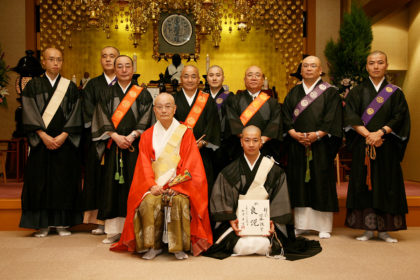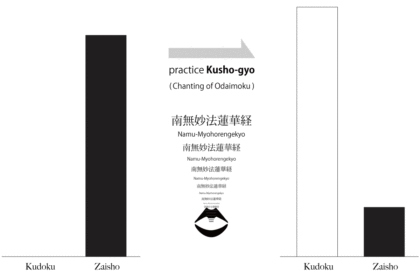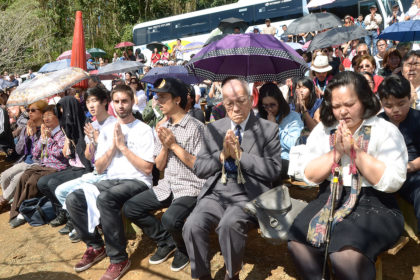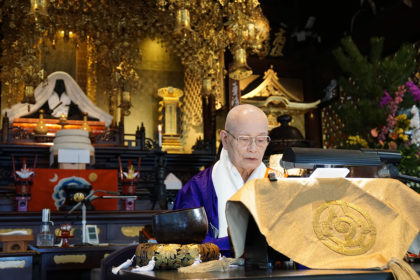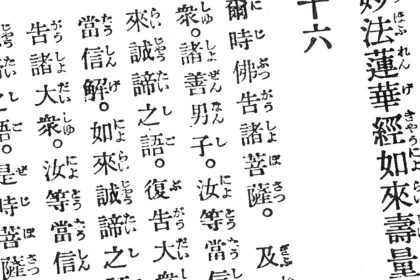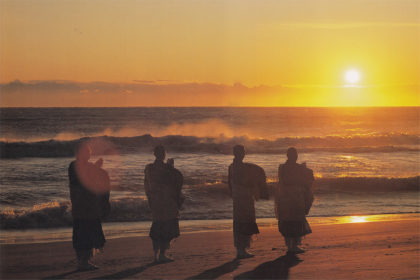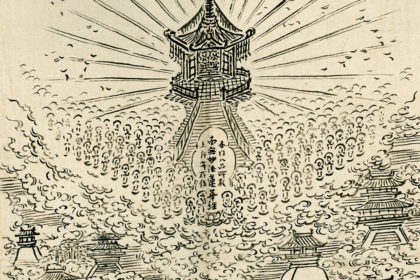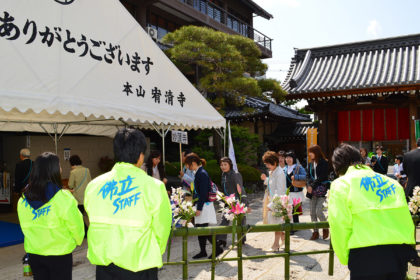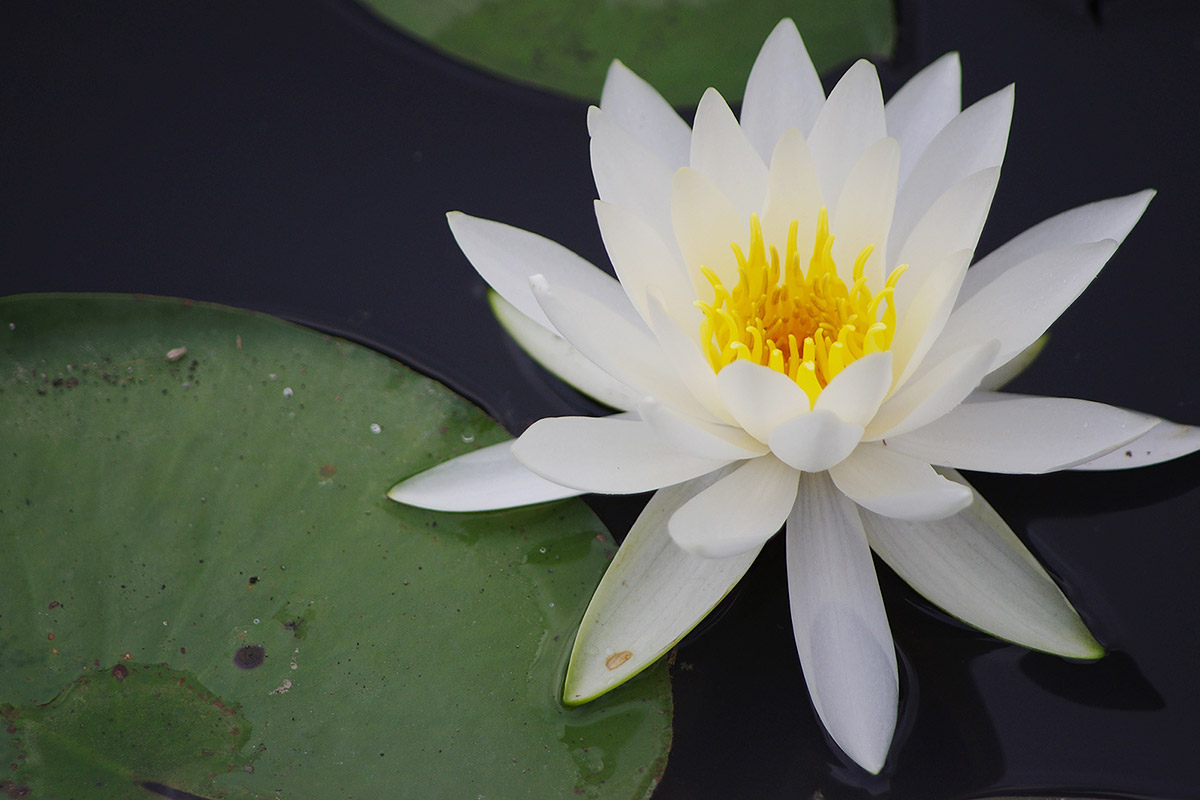
Once you chant Odaimoku, Namu Myōhō Renge Kyō, the seed of Buddhahood is sown in your mind (soul). This is called Honnin-Geshu 本因下種.
In the chapter 16 The Life-span of Buddha 如来寿量品第十六, Primordial Buddha revealed that he had already attained enlightenment in the distant past by practicing Bosatsu-gyō 菩薩行 (Bodhisattva training) for an immeasurably long period of time. Then what is the practice to become a Buddha, Bosatsu-gyō? In the distant past when Buddha was still a human being just like us, he chanted Odaimoku, Namu Myōhō Renge Kyō, and spread the Odaimoku to others to lead them all to the same Buddhahood as he attained. Therefore, Bosatsu-gyō means two kinds of training: chanting Namu Myōhō Renge Kyō and spreading it to others.
This practice that Primordial Buddha has done is also called Honnin-myōgyō 本因妙行. Hon 本 literally means “real” as explained in the article What is the Lotus Sutra?. It also means “the origin,” so Hon expresses “the origin” of “real” Buddha’s achieving enlightenment at the very beginning. Nin (In) 因 means “the cause” that Primordial Buddha attained enlightenment. Myō 妙 is the word to express and praise the virtue of Buddha, and Gyō 行 means “practice.” So, Myōgyō 妙行 is the practice that Primordial Buddha has done to open Buddhahood and we praise his achievement using this word. Therefore, Honnin-myōgyō means “the practice which is the cause (origin) of enlightenment of Primordial Buddha.”
Actually, the whole of Honmon Happon is the teaching about Honnin-myōgyō (how Primordial Buddha himself has attained Buddhahood). At the end of Honmon Happon he entrusted Odaimoku, Namu Myōhō Renge Kyō, that is the seed of Buddhahood, to Jōgyō Bodhisattva and ordered him to lead all people who live in Mappō period to Buddhahood.
A seed naturally contains a sprout and if taken care of it flowers. Therefore, if you believe in the power of Odaimoku joyfully and chant it even once, the seed of Buddhahood is sown in your mind. After that, we only have to keep chanting Odaimoku and spread it to others to sow the seed of Buddhahood in their mind the same way Primordial Buddha did so we can achieve Buddhahood ourselves, i.e. get the seed to flower. Sowing the seed in our mind and others’ by chanting Odaimoku is called Geshu 下種. In conclusion, Honnin-geshu means chanting Odaimoku that is the seed of Buddhahood (i.e. planting the seed of Buddhahood).
For the above reasons in Honmon Butsuryū Shū we always recite “Honmon Happon shoken 本門八品所顕, Jōgyō shoden 上行所伝, Honnin-geshu no Namu Myōhō Renge Kyō 本因下種之南無妙法蓮華経” before beginning Kushō-gyō 口唱行 (the practice of chanting Odaimoku). Honmon Happon Shoken literally means “revealed in Honmon Happon,” Jōgyō shoden means “handed down by Jōgyō Bodhisattva (Nichiren Shōnin)” and Honnin-geshu no means, “which is able to sow the seed of Buddhahood.” This is to tell the Gohonzon 御本尊 (the object of worship) that we will be chanting the “correct” or “genuine” Odaimoku that was revealed in Honmon Happon and handed down from Primordial Buddha by Jōgyō Bodhisattva. By chanting Odaimoku preceded by this recitation (Honmon Happon shoken…), we can accumulate Kudoku 功徳 (the merits of Buddha’s enlightenment) in our mind and body.
Then what exactly happens to us if we chant Honmon Happon shoken, Jōgyō shoden, Honnin-geshu no Namu Myōhō Renge Kyō? Let’s take a look at it in the next article.


